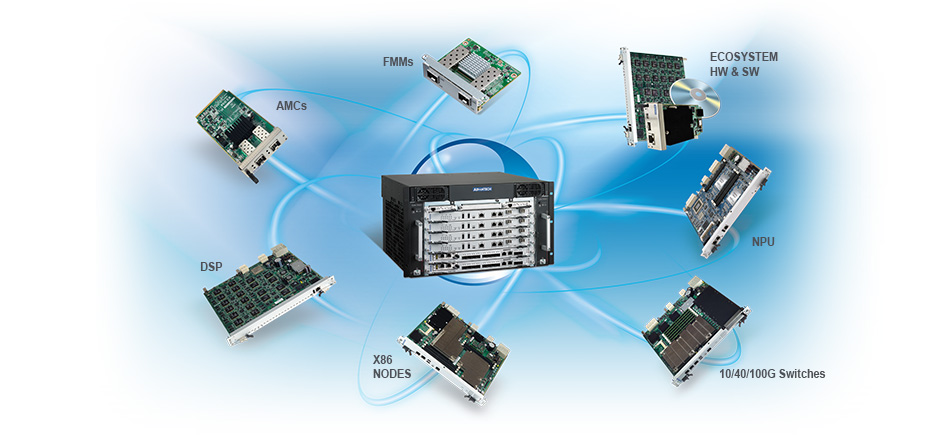By establishing a close relationship with our customer’s team based on trust and mutual understanding, we create a highly collaborative environment which is essential for the success of complex system level programs.
Advantech’s ATCA Systems Integration Team (SIT) unites products engineered by our own hardware and software designers with trusted and tested ecosystem partner building blocks. Our customer focused architects work closely with networking and telecom OEMs to design systems from pre-tested ATCA elements with proven product interoperability.

Hello, my name is Ngoc. I am your front line interface applying our engineering resources to your project . I‘m your main operational conduit to the Advantech team and organizer handling resources, schedule and budget. Based on system engineering inputs I’ll claim and chase the resources.

Hi, I’m Peter. One of my key roles is System Architect. I work closely with your team on system concepts, requirements and feasibility. From the outset I’ll be helping make sure your system design does what its meant to do and help optimize costs. I oversee requirements and act as a cross function engineer with all the involved parties. My role relates all the critical system performance parameters to design and to test and is the foundation of the integration schedule. Meeting your schedule is then a joint effort between the Local Program Manager and Systems engineering.

My name is CH. My team delivers locally tested and working components, functions or subsystems. However, the responsibility of the engineers continues into the integration effort. We participate in integration tests, help in troubleshooting and consult with the Architect when needed.
| Architecture Consulting |
|
Qualification |
|
|---|---|---|---|
| System Engineering |
|
Logistics |
|
| Customization |
|
Life Cycle Management |
|
Project Engagement starts with a set of product needs and ideas, and results in a system that meets the customer’s needs. The main project phases are:
|
Engineering
The first phase of a project is definition, where a dedicated System Architect works with the customer’s team on ideas, requirements and feasibility. Later, a Local Program Leader participates in the System Architect’s definition of specs and requirements. This results in a statement-of-work; the golden thread of all ensuing activities. Implementation is where the main system engineering work takes place. The integration and test activity here is where the team searches for unknowns and resolves uncertainties. Qualification really begins when the first overall verification test is performed by the product definition team itself to verify the original system spec. The beta test can then be started by unbiased internal stakeholders. Finally the external stakeholders, such as the customer’s customer test the product. Certification can start when all parties agree.
|
 |
|
Deployment
The deployment phase is critical and requires interaction with many different services and functions. This is where the local program manager plays a more active role than the system architect. Documentation and operating procedures are put into place as well as manufacturing test procedures and test runs. Logistics concepts and services are agreed upon before deployment begins. Advantech’s flexibility allows us to work out a tailored logistic process that adapts to customers’ needs and can grow as our customers’ business grows.
|
 |
|
Sustaining
Finally the sustaining phase takes care of life cycle management for deployed systems and new deliveries. Revision management administers changes, including timely customer notification and qualification of product upgrades, as well as performance upgrades and end of life replacements.
|
